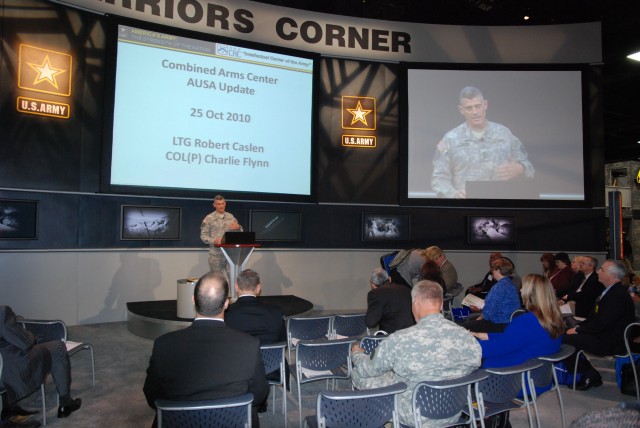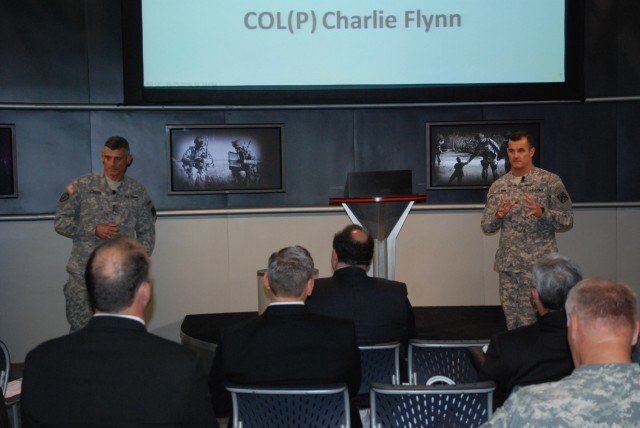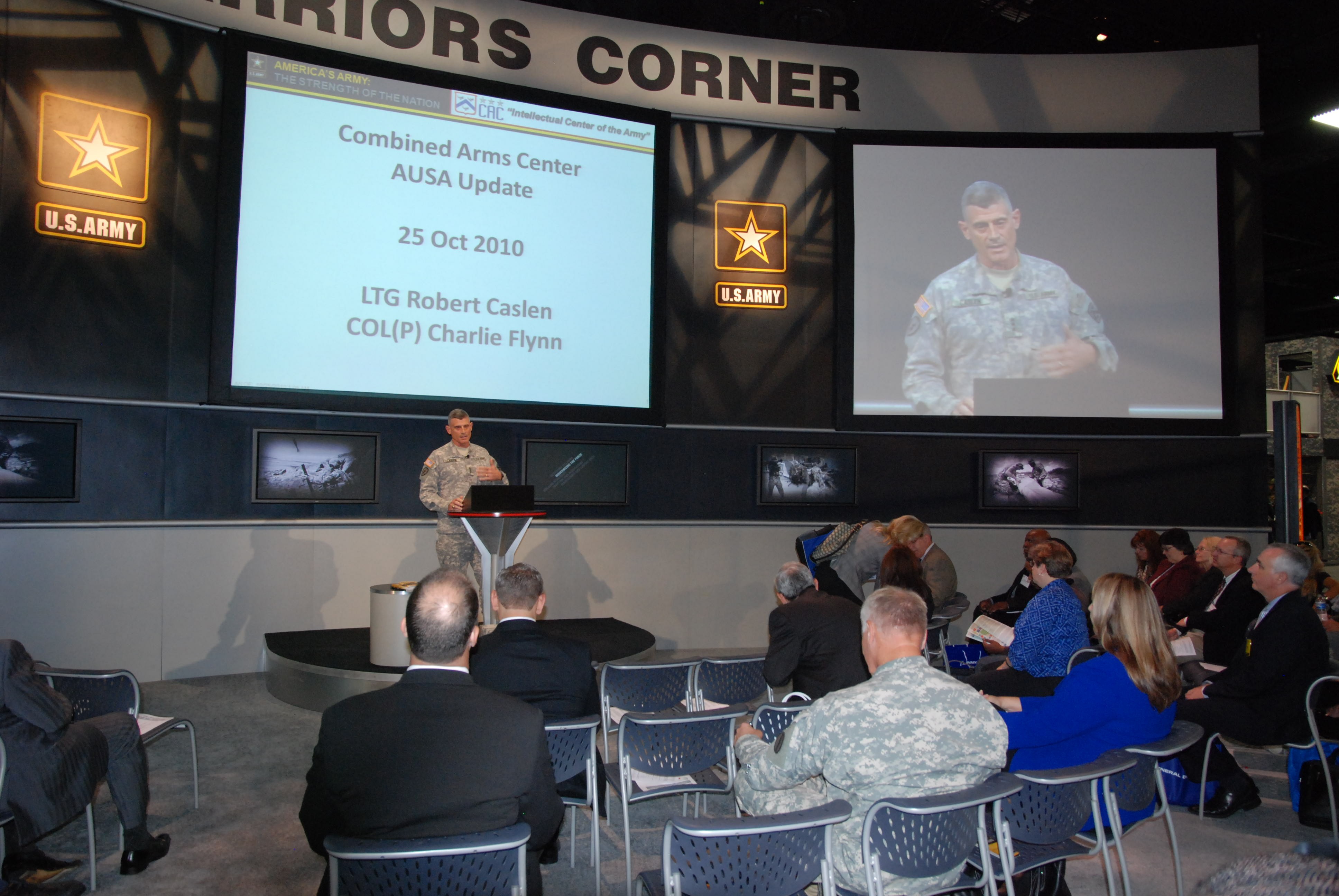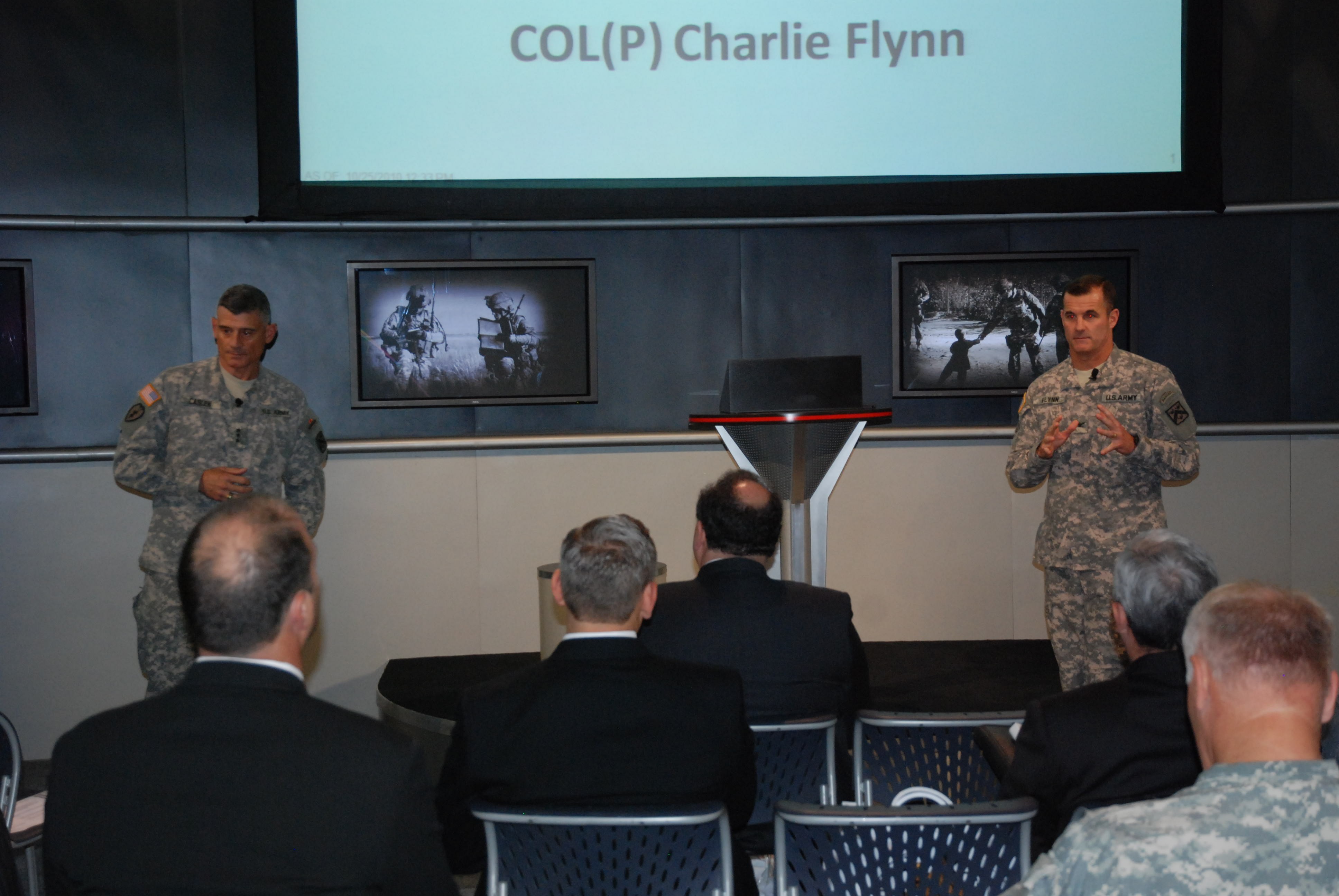WASHINGTON (Oct. 25, 2010) -- Lt. Gen. Robert Caslen, commanding general of the U.S. Army Combined Arms Center, and Col. (P) Charles Flynn, director of the Mission Command Center of Excellence, spoke about the need for mission command and the future of the MCCoE Monday at the Association of the United States Army National Meeting here.
"Mission command understands things that are complex," said Caslen, who cited history, political and social implications and environment as examples of complexities. "The responsibilities of a commander today are significantly more complex, and I would argue more enhancing than they were ten years ago from a lethal standpoint. So battle command became inadequate and command and control became inadequate."
In mission command, the commander is the central figure, and while traditional responsibilities such as massing combat power have not gone away, new responsibilities and considerations introduced by full-spectrum operations require a broader, more mission-oriented command structure.
"[Mission command] talks about the centrality of the commander ... and it does so in the context of a hybrid threat," said Caslen.
Similarly, mission command describes the Army's role while taking into account other Joint, Interagency, Intergovernmental and multinational partners and elements of the human dimension like leadership.
"The human activities, the human dimension that goes on between the network and the commander, particularly given our requirement to conduct wide-area security and combined arms maneuver is one of the reasons why mission command is a better descriptor of what the requirements are in today's environment," said Flynn.
Another feature of mission command is its use of the art of command and the science of control. The commander's responsibilities under the art of command are: understanding, visualizing, describing, directing, leading and assessing; developing teams among modular formations and joint, interagency, international and multinational partners; and leading information and influencing activities which includes establishing themes and messages and personally engaging key players. The art of command drives the science of control which includes planning, preparing, executing and assessing operations and conducting information and influence activities, as well as cyber and electromagnetic activities.
The result of the art of command and the science of control is successful full-spectrum operations through understanding the operational environment and operational adaptability. Mission command enables operational adaptability by understanding the operational environment, building adaptive teams that anticipate transitions, accepting risk to create opportunities and conducting information and influence activities.
In order to accomplish this, Flynn and the Mission Command Center of Excellence at Fort Leavenworth, Kan., have absorbed the Combined Arms Doctrine Directorate, Center for Army Lessons Learned, Combat Development Integration Division and irregular warfare fusion cell.
"We have to [gather the information] feed it back into doctrine and look at capabilities we want to use now or use in the future. Those elements reside subordinate to the MCCoE," said Flynn.
Mission command will be included in the upcoming Field Manual 3-0 Operations revision, and the MCCoE is working to assist in synchronizing and integrating warfighting functions across the doctrine, organization, training, materiel, leadership and education, personnel and facilities domains.




Social Sharing